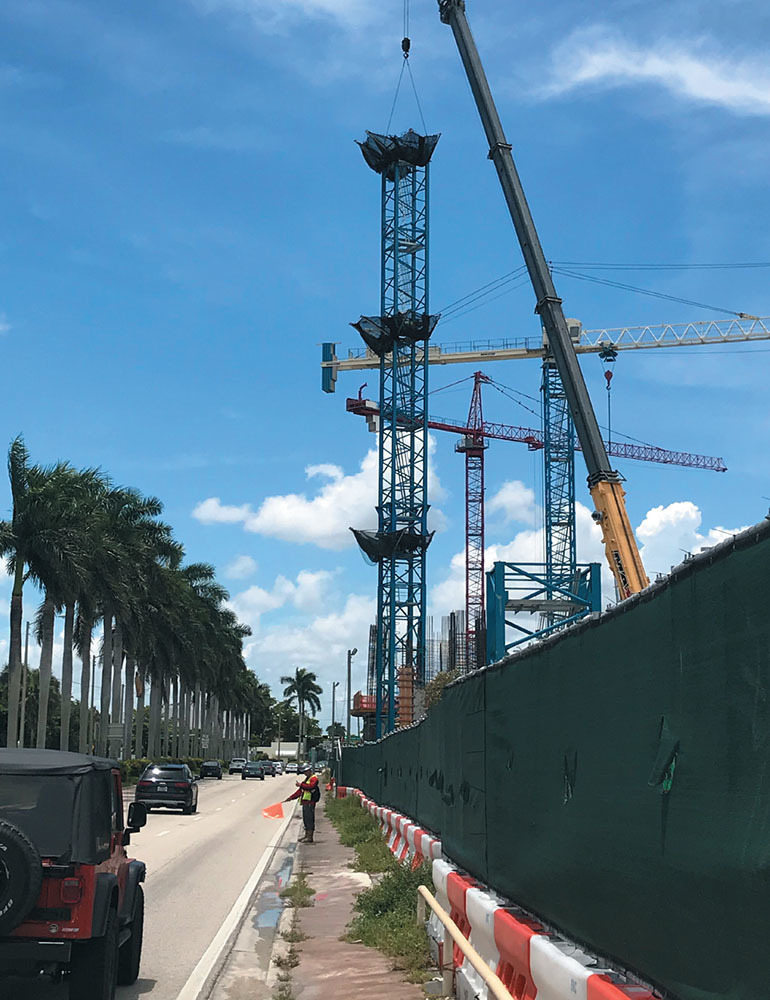No matter the project location, a robust safety, storm and disaster readiness plan is a must.
By Lisa Kopochinski

Whoever said that life, death and taxes are the three things in life that are certain forgot to include weather as the fourth.
Just ask anyone in the construction industry, and they’ll tell you that Mother Nature has her own ideas. This is why disaster preparedness is more vital than ever especially if you live and work in an area prone to hurricanes, floods and flash floods.
Extreme Weather
Christopher Diaz is vice president of environmental, health, and safety for Balfour Beatty’s Buildings operations in Florida, and also serves on the South Florida Chapter-AGC board of directors.
He says general contractors need to understand that storm preparedness planning should begin before putting the first shovel in the ground because severe weather — such as hurricanes — is often unpredictable.
“Storms have the potential to intensify and rapidly change paths, so it’s vital for project teams to be well-versed in proactive storm procedures. It’s essential that these plans are communicated and executed in the preplanning phase so project teams can quickly and safely react when unexpected weather approaches.”
Diaz adds that it is equally essential that contractors structure the delivery of projects based on the weather they may have to withstand during and after construction.
“In areas of Florida, we center our buildings operations around wind cycles and hurricane systems, blue sky lightning, heavy rain and flooding to mitigate risk. In this instance, a plan that accounts for securing equipment that the wind can move, such as tower cranes, loose materials, electronics and scaffolding helps protect the project and surrounding infrastructure, and those who come in contact with our work.”
For heavy rain and flooding, Diaz says that sandbags are placed around the perimeter of their project sites to divert turbid, muddy floodwater, and to prevent pollution in local waterway systems.
“Projects located in coastal planes also experience low and high tide sea levels that can rapidly cause flooding. Non-stop de-watering controls may also be necessary to ensure infrastructure is safely out of the ground and protected against corroded building foundations.”
Michael Teng is assistant vice president of regional product, pricing, and underwriting for Sentry Insurance in Stevens Point, Wisconsin. He says when a disaster occurs, the most important thing is getting workers into a safe zone quickly.
For example, if a flood is expected around a team’s project, the safe zone should be in a secure, higher elevation area. Conversely, if a tornado is forecasted, the safe zone should include the lowest area in a secure building.
“If you have more time to prepare for a forecasted disaster, it may allow your business to activate its full business continuity plan like getting critical materials and equipment off the project site, while also designating a temporary work location.”
Creating a Safety Plan
When it comes to instituting a safety plan, the critical areas of disaster preparedness include planning, training and execution. If one of these is missing, it could be extremely costly to a construction business.
“Your geographic region can also influence your preparation and planning,” explains Teng. “If you’re a contractor in the Great Plains, your tornado risk is higher, while a contractor in the southeastern region is more prone to hurricanes. Your plan should reflect the likelihood of disaster types based on your geographic region, but it shouldn’t exclude less common scenarios.”
Eric Yates is the southeast region, environmental, health, and safety manager for Balfour Beatty’s U.S. Civils operations. He says ensuring the team is safe is the most critical aspect of disaster preparedness and post-disaster recovery.
CLICK HERE TO READ MORE:
https://www.constructormagazine.com/disaster-preparedness-what-to-consider/
